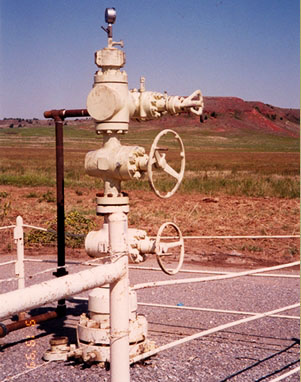Don't squander energy opportunity
Bernard Weinstein of SMU's Maguire Energy Institute writes about the Barnett Shale and the potential for natural gas.
By BERNARD L. WEINSTEIN
Fifteen years ago, no one in the United States, or in North Texas for that matter, had ever heard of the Barnett Shale — except maybe a few geologists. Today, it's the largest natural gas field in the United States, producing 4 billion cubic feet a day. What's more, the Barnett Shale has added a new dimension to the North Texas economy, supporting thousands of jobs and generating millions in tax revenue for local governments and school districts.
Other shale gas fields across the country may prove to be even more prolific, in particular the Haynesville Shale in northern Louisiana and the gigantic Marcellus Shale formation that stretches across large swaths of West Virginia, Pennsylvania and New York. The Haynesville formation is estimated to hold about 200 trillion cubic feet of natural gas, equivalent to 18 years' worth of current U.S. oil production. And by one calculation, the Marcellus field by itself has the potential to produce enough gas to meet the entire nation's needs for at least 14 years.
Extracting natural gas from shale rock is a different enterprise than wildcatting. Indeed, it's essentially a manufacturing process that combines “hydraulic fracturing” with horizontal drilling. Fracturing involves the injection of water, chemicals and sand to crack the rock and release the trapped gas. Horizontal drilling, in turn, enables a single well to follow a seam of shale for up to two miles, thereby producing much more gas from one well.
In recent months, concerns about the environmental impacts of hydraulic fracturing have been raised both in the Barnett Shale and the newer gas plays in Louisiana and the Northeast. In particular, some environmental groups are claiming that the chemicals used in fracturing are contaminating local water supplies. In fact, New York State has imposed a moratorium on gas drilling anywhere in the New York City watershed.
Hydraulic fracturing has been used in nearly 1 million wells across the United States. Nonetheless, careful studies by the Environmental Protection Agency and the Ground Water Protection Council haven't revealed a single case of drinking water contamination from shale gas drilling. That's because the fracturing occurs far below the location of drinking water, and the gas wells are encased in steel and concrete to ensure isolation from ground water. All but 1 percent of the fracturing mixture is made up of water and sand, so the small amount of chemicals and additives is well diluted. What's more, as the gas rises to the surface it drives most of the mixture back out of the well, where it can be captured and treated in accordance with state and federal regulations.

Five years ago, the U.S. Department of Energy released a report warning that gas production was on a permanent decline in the U.S. But new technologies have completely changed the equation so that at current levels of demand, we now have at least 90 years of proven and potential reserves — a figure that will no doubt grow as new shale fields are developed. Importantly, this versatile energy source can reduce our dependence on imported oil while heating our homes, generating electricity, powering motor vehicles and providing the basic material for fertilizers and other petrochemical-based products.
Is producing, gathering, processing and delivering natural gas from shale formations completely risk-free? Of course not. Some accidents will happen. But these minimal risks must be weighed against the huge economic and national security benefits that can be realized by fully developing our domestic natural gas resources. Let's not squander this unique opportunity.
# # #